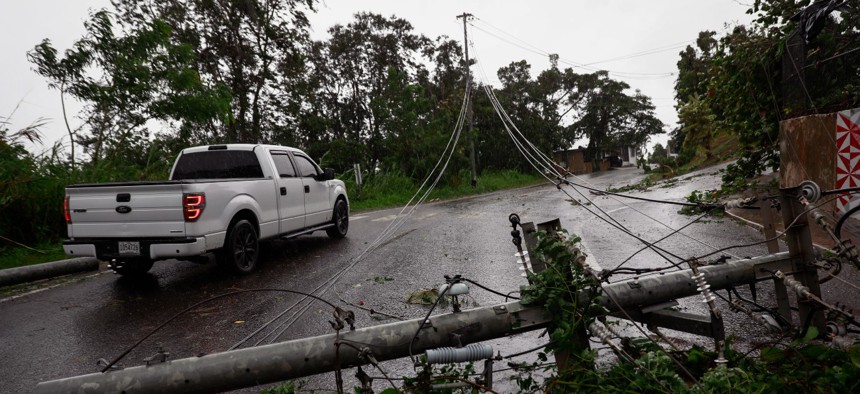Federal Agencies Are Sending Hundreds of Employees to Puerto Rico to Help With Hurricane Response
FEMA already had a significant presence on the island due to ongoing recovery efforts.
The Biden administration is deploying hundreds of federal employees from several agencies to Puerto Rico to help the commonwealth recover from Hurricane Fiona, which devastated the island in recent days.
Most Puerto Ricans are still without power and at least four individuals have died from the storm, which has caused severe flooding and significant damage. The Federal Emergency Management Agency is leading the federal response on the ground, though it is acting in a support capacity to local officials. The U.S. Army Corps of Engineers and Health and Human Services Department have also deployed personnel to the island.
FEMA already maintained a significant presence in Puerto Rico as it continues to ramp up its response to Hurricane Maria, which struck in 2017. The agency had about 700 employees on the island before Fiona made landfall, Keith Turi, FEMA’s assistant administrator for recovery, told reporters on Tuesday, most of whom were able to quickly pivot to response for the new storm. FEMA on Tuesday sent one national and four regional incident management teams, as well as two urban search and rescue teams, to Puerto Rico, which will result in hundreds of additional staffers arriving in the coming days.
“Our partnership with the government of Puerto Rico has never been stronger and we remain committed to helping them respond to and recover from Hurricane Fiona,” said FEMA Administrator Deanne Criswell. “We’re sending hundreds of additional staff in the next few days to place staff in each of the impacted communities to supplement our already vast footprint.”
Turi said FEMA is much better positioned to support Puerto Rico’s recovery effort than it was in 2017, when more than 3,000 residents died and the agency’s response was widely criticized. FEMA has additional commodities on the island within four warehouses, compared to just one in when Maria struck. It has more water and generators on the island than it ever had previously, Turi added, and FEMA personnel have spent years developing better relationships with local officials. FEMA staff are embedded with Puerto Rico’s emergency management bureau as well as its power company.
“If they have any shortfalls, if they have any needs, if they have any requirements we’ll be there to assist,” Turi said.
The U.S. and Puerto Rico governments have both faced criticism for their delay in restoring services and infrastructure on the island in the five years since Maria, as well as for the struggle to build a more resilient power grid. The Army Corps is currently conducting assessments of the damage brought by Fiona.
FEMA’s Robert Little is serving as the federal coordinating officer, taking the position after President Biden declared an emergency on Sunday. The federal government will reimburse 75% of the costs for the recovery, though Democratic senators on Tuesday asked Biden to increase that to 100%. Turi said FEMA has worked to facilitate a smoother process of getting direct aid to those who need it, such as by easing documentation requirements.




